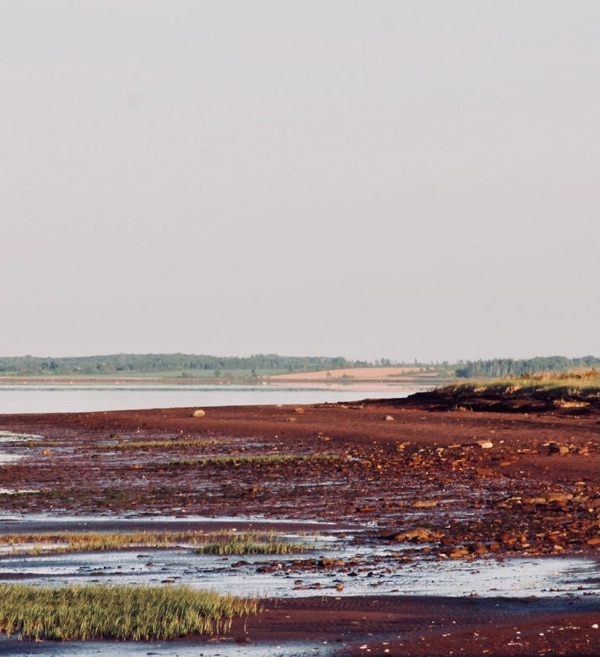Walking Pedagogy for Science Education and More-Than-Human Connection
DOI:
https://doi.org/10.25071/1916-4467.40626Keywords:
Science education, embodied learning, place-based learning, David Abram, literary métissageAbstract
This literary-visual métissage weaves together stories, scholarship and photographs. What can be unearthed—science education, embodied knowledge, environmental ethics—when we walk on the land? Embodied and sensorial engagement fosters relational and enlivening educational experiences. Whether preschool or post-doc, direct sense experience offers not only active and experiential pedagogy, but also a spiritual attunement with the natural world. Now, amid the climate crisis and screen fatigue pandemic, such Earth resonance is of utmost import. Let us walk through a snowy forest, ponder what counsel our shoeless feet (and David Abram) afford us, and envision the learning environment as an emergent and adaptable opportunity for connection and wonder.References
Abram, D. (1996). Spell of the sensuous: Perception and language in a more-than-human world. Vintage.
Abram, D. (2011). Becoming animal: An earthly cosmology. Vintage.
Beavington, L. (2016). A creative approach: Teaching biology labs through arts-based learning. In K. McMahon (Ed.), Tested studies for laboratory teaching. Association for Biology Laboratory Education. http://www.ableweb.org/volumes/vol-37/?art=26
Beavington, L. (2018). The jaguar walk: Reflections from the Amazon Field School. Transformative Dialogues, 11(3), 1-10. https://journals.kpu.ca/index.php/td/article/view/141
Beavington, L., & Jewell, J. (2018). GPS ecocache: Connecting learners to experience and place, American Association of Philosophy Teachers Studies in Pedagogy, 4, 161-180. DOI: https://doi.org/10.5840/aaptstudies201922539
Chambers, C., Hasebe-Ludt, E., Leggo, C., & Sinner, A. (Eds.) (2012). A heart of wisdom: Life writing as empathetic inquiry. Peter Lang.
Emerson, R. W., & Thoreau, H. D. (1992). Nature and walking. Beacon Press.
Fleischner, T., Espinoza, R., Gerrish, G., Greene, H., Kimmerer, R., Lacey, E., Pace, S., Parrish, J., Swain, H., Trombulak, S., Weisberg, S., Winkler, D., & Zander, L. (2017). Teaching biology in the field: Importance, challenges, and solutions. BioScience, 67(6), 558-567. DOI: https://doi.org/10.1093/biosci/bix036
Goertz, K. (2018). Walking as pedagogy. In C. Hall, Y. Ram, & N. Shoval (Eds.), The Routledge international handbook of walking (pp. 55-64). Taylor & Francis. DOI: https://doi.org/10.4324/9781315638461-5
Hasebe-Ludt, E., Chambers, C. M., & Leggo, C. (2009). Life writing and literary mėtissage as an ethos for our times. Peter Lang.
Hasebe-Ludt, E., & Leggo, C. (Eds.) (2018). Canadian curriculum studies: A métissage of inspiration/imagination/interconnection. Canadian Scholars.
Helander, M., Cushman, S., & Monnat, S. (2020, May 26). A public health side effect of the coronavirus pandemic: Screen time-related eye strain and eye fatigue. Lerner Center for Public Health Promotion. https://lernercenter.syr.edu/2020/05/26/ib-24
Humphreys, C. (2018). Dynamic horizons: A research and conceptual summary of outdoor education. The Council of Outdoor Educators of Ontario. https://www.coeo.org/wp-content/uploads/2019/07/COEO2018DynamicHorizonsPDF.pdf
Jiang, M. (2020, April 22). The reason Zoom calls drain your energy. BBC. https://www.bbc.com/worklife/article/20200421-why-zoom-video-chats-are-so-exhausting
Jickling, B., Blenkinsop, S. Timmerman, N., & De Danan Sitka-Sage, M. (Eds.). (2018). Wild pedagogies: Touchstones for re-negotiating education and the environment in the Anthropocene. Palgrave Macmillan. DOI: https://doi.org/10.1007/978-3-319-90176-3
Juster, F. T., Stafford, F., & Ono, H. (2004). Changing times of American youth: 1981-2003. Institute for Social Research, University of Michigan. http://www.ns.umich.edu/Releases/2004/Nov04/teen_time_report.pdf
Kelly, V. (2012). A Métis manifesto. In C. Chambers, E. Hasebe-Ludt, C. Leggo, and A. Sinner (Eds.), A heart of wisdom: Life writing as empathetic inquiry (pp. 363-368). Peter Lang.
Kimmerer, R. W. (2012). Searching for synergy: Integrating traditional and scientific ecological knowledge in environmental science education. Journal of Environmental Studies and Sciences, 2(4), 317-323. DOI: https://doi.org/10.1007/s13412-012-0091-y
Kuo, F., & Taylor, F. (2004). A potential natural treatment for attention deficit/hyperactivity disorder: Evidence from a national study. American Journal of Public Health, 94(9), 1580-1586. DOI: https://doi.org/10.2105/AJPH.94.9.1580
Landman-Reiner, A. (2020). Complementing reductionism: Goethean science part 1: Qualities and wholeness. EXPLORE: The Journal of Science & Healing, 00(2020), 1-6.
Louv, R. (2005). Last child in the woods: Saving our children from nature-deficit disorder. Algonquin.
Merriam-Webster. (n.d.). Métis. In Merriam-Webster's collegiate dictionary (11th ed.). Retrieved September 1, 2021, from https://www.merriam-webster.com/dictionary/metis
Park, B. J., Tsunetsugu, Y., Kasetani, T., Kagawa, T., & Miyazaki, Y. (2010). The physiological effects of Shinrin-yoku (taking in the forest atmosphere or forest bathing): Evidence from field experiments in 24 forests across Japan. Environmental Health and Preventive Medicine, 15(1), 18-26. DOI: https://doi.org/10.1007/s12199-009-0086-9
Richmond, S., & Snowber, C. (2011). Landscapes of aesthetic education. Cambridge Scholars.
Roth, W. M. (2008). Bricolage, métissage, hybridity, heterogeneity, diaspora: Concepts for thinking science education in the 21st century. Cultural Studies of Science Education, 3(4), 891-916. DOI: https://doi.org/10.1007/s11422-008-9113-1
Snowber, C. (2018). Embodied inquiry: Writing, living and being through the body. Springer.
St. Georges, D. (2020). Embodied landscapes: A creation-research Indigenous métissage. [Doctoral dissertation, Concordia University]. Spectrum Research Repository. https://spectrum.library.concordia.ca/986826/
Stains, M., Harshman, J., Barker, M., Chasteen, S., Cole, R., DeChenne-Peters, S., Eagan, M. K., Esson, J., Knight, J., Laski, F., Levis-Fitzgerald, M., Lee, C., Lo, S., McDonnell, L., McKay, T., Michelotti, N., Palmer, M., Plank, K., Rodela, T., … Young, A. (2018). Anatomy of STEM teaching in American universities: A snapshot from a large-scale observation study. Science, 359(6383), 1468-1470. DOI: https://doi.org/10.1126/science.aap8892
Weber, A. (2013). Enlivenment: Towards a fundamental shift in the concepts of nature, culture and politics. Heinrich Böll Foundation. https://www.boell.de/sites/default/files/enlivenment_v01.pdf
Young, J., Haas, E., & McGown, E. (2010). Coyote's guide to connecting with nature (2nd ed.). OWLLink Media.
Young, J., & Gardoqui, D. (2013). What the robin knows: How birds reveal the secrets of the natural world. Houghton Mifflin Harcourt.
Downloads
Published
How to Cite
Issue
Section
License
Copyright (c) 2021 Lee Beavington 
Copyright for work published in JCACS belongs to the authors. All work is licensed under a Creative Commons Attribution-ShareAlike 4.0 International license.


